
California Archaeology
Scope & Guideline
Bridging the Past and Present of California's Archaeology
Introduction
Aims and Scopes
- Historical Archaeology:
The journal emphasizes the exploration of historical archaeological sites and artifacts, linking past human behaviors and cultural practices to contemporary issues. - Indigenous Collaboration:
A significant focus is placed on working with Indigenous communities, ensuring that ancestral knowledge and cultural heritage are respected and integrated into archaeological research. - Maritime Archaeology:
California's coastal and maritime landscapes are studied to understand the social histories and cultural practices related to seafaring and marine resource utilization. - Technological Advances:
The journal highlights the use of modern technologies in archaeology, including digital heritage, isotopic analysis, and data ethics, to enhance research methodologies. - Cultural Resource Management:
The journal addresses the implications of archaeological findings for cultural resource management, emphasizing the importance of preserving archaeological sites in the face of development and change. - Environmental Archaeology:
Investigations into the relationships between past human populations and their environments, including subsistence strategies and ecological changes, form a core area of research.
Trending and Emerging
- Collaboration with Indigenous Communities:
An increasing number of studies emphasize the importance of collaboration with Indigenous peoples, focusing on their roles in research, cultural heritage management, and the interpretation of archaeological findings. - Conflict Archaeology:
Emerging themes related to conflict archaeology explore historical memory and the experiences of marginalized groups, particularly in the context of California's diverse and often tumultuous history. - Digital Heritage and Ethical Practices:
There is a growing focus on the ethical implications of digital heritage practices, including data management, accessibility, and the responsibilities of archaeologists to the communities they study. - Environmental and Climate Studies:
Research addressing the impact of environmental changes on past populations, including climate adaptation and resilience strategies, is gaining traction, reflecting broader concerns about climate change today. - Maritime Cultural Landscapes:
The exploration of California's maritime cultural landscapes is emerging as a critical area of study, linking archaeological research with contemporary issues of marine resource management and environmental conservation.
Declining or Waning
- Traditional Ethnographic Approaches:
There is a noticeable decrease in traditional ethnographic studies that do not incorporate contemporary Indigenous perspectives, reflecting a shift towards more collaborative and inclusive methodologies. - Purely Historical Focus:
While historical archaeology remains important, the journal has moved away from studies that focus solely on historical narratives without connecting them to broader archaeological contexts or Indigenous histories. - Generalized Archaeological Surveys:
The trend towards more localized and specific case studies has led to a decline in broader archaeological surveys that lack detailed context or connection to contemporary issues. - Non-Interdisciplinary Studies:
Papers that do not engage with interdisciplinary approaches are becoming less common, as the journal prioritizes research that integrates multiple scientific and cultural perspectives.
Similar Journals

Azania-Archaeological Research in Africa
Pioneering Research on Africa's Archaeological Frontiers.Azania-Archaeological Research in Africa, published by Routledge Journals, Taylor & Francis Ltd, stands as a premier academic resource in the field of archaeology, specifically focusing on African archaeological research. With a remarkable tradition dating back to 1966, the journal spans over half a century of rigorous scholarship, aiming to enrich our understanding of Africa's diverse cultural and historical narratives. Currently indexed in the prestigious Q1 category for both Archaeology and Arts and Humanities, it ranks impressively in the Scopus database, placing within the top 12% of journals in its field. This commitment to excellence facilitates the dissemination of innovative and insightful research, catering to a broad audience of researchers, professionals, and students alike. While the journal is not open access, its impactful contributions continue to shape contemporary archaeological discourse, making it an essential resource for anyone passionate about the study of Africa's archaeological heritage.
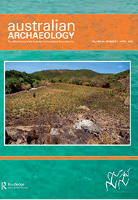
AUSTRALIAN ARCHAEOLOGY
Exploring the Depths of Australia’s Past.AUSTRAILIAN ARCHAEOLOGY, published by Taylor & Francis Ltd, is a leading academic journal dedicated to the field of archaeology. With a strong reputation as evidenced by its Q1 ranking in both the Arts and Humanities and Social Sciences categories, this journal fosters the growth and dissemination of pioneering research from diverse archaeological contexts. The journal has been a vital resource for scholars and practitioners since its convergence in 2002, supporting the collective advancement of knowledge in the archaeological discipline. By offering a platform for rigorous analysis and critical discussions, AUSTRAILIAN ARCHAEOLOGY appeals to a wide audience, from established researchers to students beginning their journey in archaeology. Although it is not an Open Access journal, the insights provided are invaluable for enhancing understanding and appreciation of Australia’s rich archaeological heritage. With a Scopus ranking that places it among the top contenders in its field, this journal continues to contribute significantly to outstanding archaeological scholarship and professional practice.
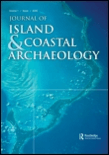
Journal of Island & Coastal Archaeology
Navigating the Intersection of Ecology and HistoryThe Journal of Island & Coastal Archaeology, published by Routledge Journals, Taylor & Francis Ltd, stands as a leading publication in the fields of archaeology, ecology, and history, boasting a prestigious Q1 ranking in multiple categories as of 2023. Since its inception in 2006, this journal has been a vital resource for researchers, professionals, and students interested in the rich archaeological heritage of island and coastal regions. With an impressive Scopus ranking that places it in the top tiers of both Arts and Humanities and Social Sciences, it offers insightful studies and innovative methodologies that address the complexities of human interactions with marine and terrestrial environments. The journal aims to advance knowledge and promote discussion through rigorous peer-reviewed articles, fostering a deeper understanding of indigenous cultures and their environmental contexts. While currently not offering an open-access model, the journal remains committed to disseminating high-quality research crucial for shaping future archaeological scholarship.
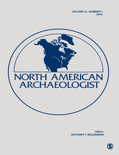
NORTH AMERICAN ARCHAEOLOGIST
Decoding the Layers of North American HistoryNORTH AMERICAN ARCHAEOLOGIST, published by SAGE PUBLICATIONS INC, is a prestigious journal that serves as an essential resource for professionals and scholars in the field of archaeology. With its ISSN 0197-6931 and E-ISSN 1541-3543, the journal aims to disseminate high-quality research that contributes to the understanding of the historical and cultural significance of North America from prehistory to the present. As of 2023, it holds an impressive Q2 category in Archaeology and ranks within the Q1 tier for Archaeology (arts and humanities), positioning it among the top journals in its field. Its Scopus rankings further emphasize its significance, reflecting a commendable percentile standing that underscores its influence in both arts and humanities and social sciences. The journal is committed to offering a platform for innovative research and scholarly discussion, making it invaluable for researchers, professionals, and students dedicated to advancing archaeological knowledge.
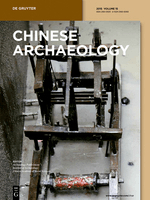
Chinese Archaeology
Advancing Insights into Ancient CivilizationsChinese Archaeology, published by WALTER DE GRUYTER GMBH, is a leading journal dedicated to the exploration and study of China's rich archaeological heritage. With an ISSN of 2160-5025 and an E-ISSN of 2160-5068, this journal serves as an essential platform for scholars, researchers, and enthusiasts in the field of archaeology, offering a blend of original research articles, reviews, and critical essays that address both contemporary issues and historical narratives. While it currently operates under a conventional access model, making cutting-edge research available to a select audience, it plays a crucial role in advancing knowledge about China's archaeological sites, artifacts, and past civilizations. Given the increasing interest in Eastern archaeology and its significance in a global context, Chinese Archaeology is positioned as a pivotal resource for understanding and interpreting the complexities of China’s historical evolution. Researchers and academics are encouraged to contribute and engage with this vital field of study to foster greater insights and innovations.
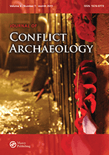
Journal of Conflict Archaeology
Critical Insights into the Archaeological Impact of WarJournal of Conflict Archaeology, published by Routledge Journals, Taylor & Francis Ltd, is a pivotal periodical in the field of archaeology and history, focusing on the intersections between human conflict and archaeological practice. With a robust ISSN of 1574-0773 and E-ISSN 1574-0781, this journal not only presents innovative research findings but also catalyzes critical discussions on how conflicts shape and are shaped by material culture. Spanning volumes since 2005 and continuing through 2024, the journal is ranked in category quartiles, achieving Q3 status in Archeology and Arts & Humanities, and Q2 in History by 2023 metrics, illustrating its significant contribution to academic discourse. The Journal of Conflict Archaeology emphasizes accessibility for scholars and practitioners, making valuable insights available to those navigating the complexities of archaeology in context to historical conflicts. With research that is cited within the 78th and 67th percentiles of its respective fields, this journal serves as an essential resource for researchers, professionals, and students aiming to deepen their understanding of archaeological methodologies in conflict studies.

JOURNAL OF WORLD PREHISTORY
Uncovering the Past, Shaping the Future of ArchaeologyJOURNAL OF WORLD PREHISTORY, published by SPRINGER, stands as a premier platform for disseminating pioneering research and scholarship in the field of archaeology. Boasting a prestigious Q1 status in Archeology and a remarkable 97th percentile ranking in its category, this journal has made significant contributions to the understanding of global prehistory since its inception in 1987. It serves as an invaluable resource for researchers, professionals, and students alike, providing access to high-quality articles that explore diverse archaeological methodologies, theoretical frameworks, and case studies. Although it is not an open-access journal, its impact and relevance continue to resonate within the academic community, fostering critical discussions and advancing knowledge in this vital discipline. With publications converging from 2006 and set to continue until 2024, the JOURNAL OF WORLD PREHISTORY remains committed to advancing archaeological research and enhancing interdisciplinary collaboration.

African Archaeological Review
Unearthing Africa's Rich HeritageWelcome to the African Archaeological Review, a leading academic journal published by Springer, dedicated to advancing the field of archaeology with a unique focus on the African continent. Since its inception in 1983, this journal has become a pivotal platform for researchers, professionals, and students seeking to explore the complexities of African cultural heritage through empirical studies, theoretical discussions, and methodological innovations. With a commendable Q1 ranking in both Archaeology (Arts and Humanities) and Archaeology categories for 2023, this journal ranks among the top 10% of publications in its field, reflecting its influential contributions to archaeological scholarship. The Scopus ranking places it at #40 out of 413 in Arts and Humanities and #39 out of 354 in Social Sciences, highlighting its esteemed status within academic circles. Although it does not currently offer Open Access options, the journal remains committed to disseminating vital research findings that shape our understanding of Africa's rich archaeological landscape. Join a community dedicated to unraveling past human behaviors and interactions within diverse African environments through the pages of the African Archaeological Review.

Archaeologies-Journal of the World Archaeological Congress
Decoding the Past for a Better TomorrowArchaeologies: Journal of the World Archaeological Congress is a premier academic journal published by Springer, focusing on the dynamic and interdisciplinary field of archaeology. With an ISSN of 1555-8622 and an E-ISSN of 1935-3987, this journal serves as a significant platform for the dissemination of innovative research, theory, and practice within the archaeological community. Hailed for its rigorous peer-review process, Archaeologies consistently ranks in the 74th percentile among its peers, currently holding a Q2 category placement in the field of archaeology as per the 2023 Scopus rankings. The journal publishes original articles, critical essays, and case studies that emphasize the cultural, historical, and methodological aspects of archaeological research from a global perspective. As a key resource for researchers, professionals, and students alike, Archaeologies facilitates critical dialogue and enhances understanding of humanity's past through archaeology. Although the journal is not open access, it provides various subscription options to ensure its valuable content remains accessible to its diverse audience.

Prilozi Instituta za Arheologiju u Zagrebu
Connecting scholars to the rich tapestry of Croatia's archaeological heritage.Prilozi Instituta za Arheologiju u Zagrebu is a prominent academic journal published by INST ARHEOLOGIJU, dedicated to advancing the field of archaeology and related historical studies. Operating in Croatia, this journal serves as a vital platform for scholars, researchers, and students to disseminate innovative research and insights within the realm of archaeology, with a focus on the rich cultural heritage of the region. The journal spans contributions from 2002 to 2011 and has ongoing publication since 2013, reflecting its commitment to contemporary archaeological discourse. With a growing reputation, it has achieved a Q3 ranking in the fields of Archaeology and Arts and Humanities, and a Q2 ranking in History, signifying its impact and relevance in the academic community. Although Open Access options are not available, the journal remains an essential resource for those pursuing in-depth knowledge and research in archaeology. Researchers can harness the journal's extensive scope to explore critical historical narratives and archaeological findings, solidifying its importance in both local and global contexts.